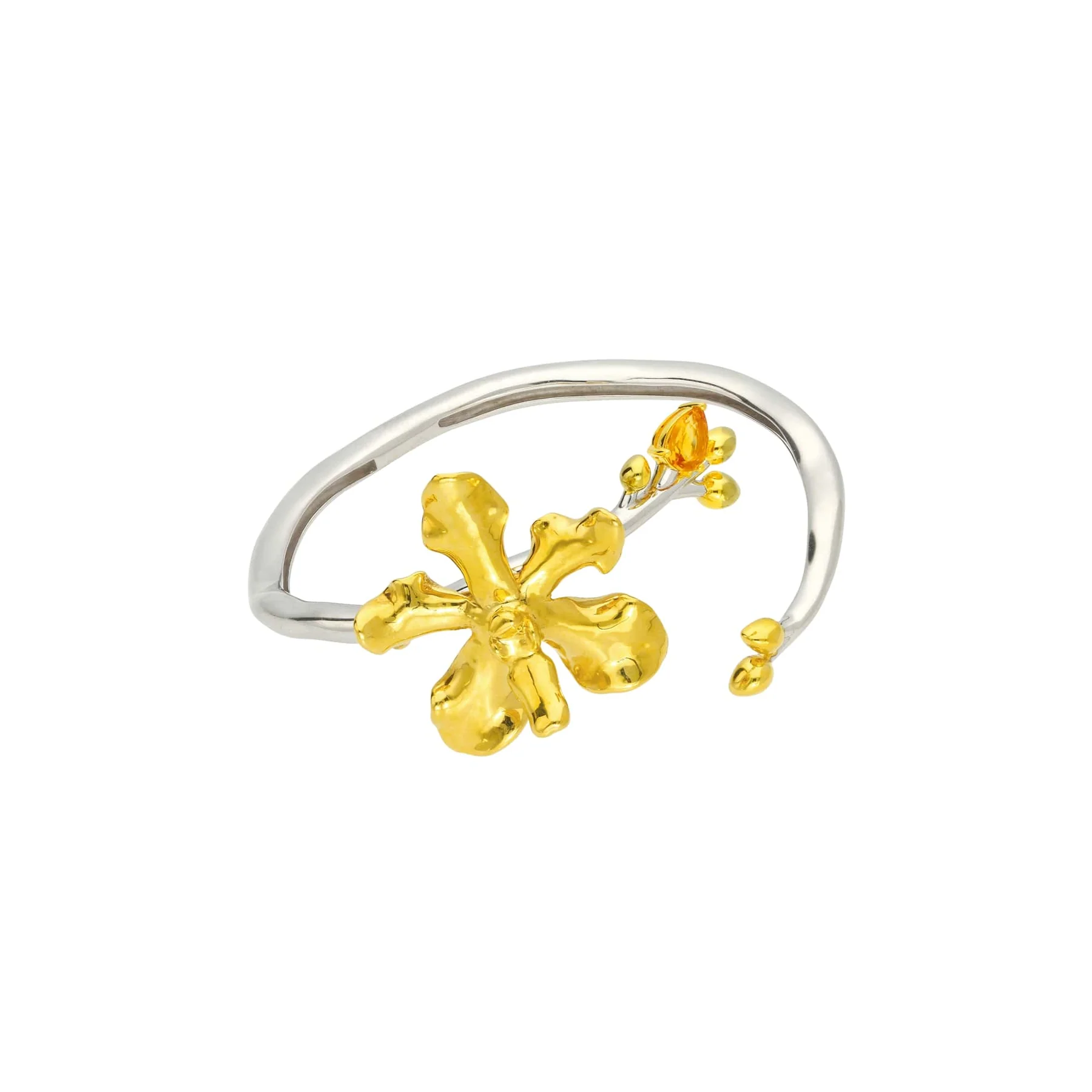Gold has always been a sign of quality, wealth, and social standing, which is why gold jewelry is still one of the most popular kinds of jewelry worn today.
Gold jewelry has been around longer than most jewelry, and it is one of the types of jewelry that is often passed down from one generation to the next.
Gold is used to make a lot of different kinds of jewelry, like watches, gold necklaces, earrings, and pendants. It can be found almost everywhere in the world.
“Does gold jewelry ever turn green or yellow?” is one of the most common questions we get at All In Faith. Gold doesn’t tarnish in its purest form. However, gold used to make jewelry usually has other metals mixed in with it, which can cause a small amount of tarnish to build up over time.
Let’s take a closer look at the parts that go into making gold jewelry and the different ways to keep gold jewelry from tarnishing or fix it if it does.
Does gold fade over time?
When gold starts to tarnish, the jewelry’s color will start to change, but only slightly (usually a darker color). This means that the gold is starting to get tarnish on its surface and is going through very mild corrosion.
Since there is a lot of debate about whether or not real gold tarnishes, we will explain in detail what happens to gold jewelry when it does.
Gold is one of the elements that is thought to be the least reactive, so it has been given the name “least reactive element.” Gold in its purest form doesn’t rust or turn black over time because it doesn’t mix easily with oxygen.
This is why pure gold shines so much longer than other metals. When looking for gold accessories at jewelry shops, it’s very hard to find pieces that are made of nothing but gold.
Because pure gold is so easy to shape, it needs to be mixed with other metals before it can be made into strong, long-lasting jewelry.
The properties of the metals used to make alloys with gold make the gold more likely to tarnish. If you don’t take care of your gold jewelry the right way, you might notice that it starts to turn black or gray.
If you want to buy gold jewelry that will last longer and is less likely to turn black, you should choose higher karat gold.
For example, 24 carat gold won’t change color over time because it is made of pure gold. Jewelry with less than 14 karats of gold is more likely to lose its shine over time. If you want to be safe, choose gold jewelry with between 14 and 18 karats of gold.
People tend to think that if gold jewelry turns black, it is not real gold. This is one of the most common false beliefs about gold jewelry. This statement couldn’t be more wrong, as it only suggests that the jewelry isn’t made of pure gold.
The higher the number of karats, the less other metals have been mixed in with the gold. This is the main reason why gold with a lower karat tends to lose its shine faster.
On the other hand, gold jewelry with a lower karat value oxidizes more slowly than sterling silver jewelry, which is another popular choice.
To be more specific, what causes gold jewelry to turn black, and what tends to speed up the process? Let’s discuss!
What causes gold to tarnish?
Oxygen and sulfur are two elements that help tarnish form on gold, similar to how rust forms on metal.
When water mixes with oxygen and sulfur compounds in the other metals that are mixed with the gold, corrosion will happen on the surface of the gold. This will make the gold look like it has been worn down.
Because everyone’s body works differently, the skin of some people may age faster than the skin of others.
You will also see more tarnish if you regularly put hairspray, cologne, perfume, or detergent on parts of your body where your jewelry sits. This will speed up the process of the silver getting old.
Eating foods that are very acidic could also be a reason. Some foods, like onions, spices, pickles, and lemons, can cause gold jewelry to lose its shine more quickly.
How to avoid gold from being tarnish
Sad to say, the base metal will eventually rise to the surface, which will change the color of both the metal and the gold.
As a result of this process, the gold will lose its shine and need to be polished and cared for to get it back.
You may not be able to change the air you breathe or the skin you live in, but you can change how you take care of your jewelry. Here are some things you can do to keep costume jewelry from getting tarnished.
Keep It Dry
If you want your jewelry to get tarnished as quickly as possible, you should keep it away from water and other substances.
This includes things like putting on lotion, washing your hands, spraying yourself with perfume, and sweating while wearing jewelry.
Even the oils on your skin can wear down plating and metals over time, but again, the rate of wear will be different for each person.
Have you ever gotten your jewelry wet by accident? Make sure to clean and dry them as soon as you can.
Store It Properly
Listen up, because this is something you won’t want to miss! Even something as innocuous as the moisture that naturally occurs in the air can cause your diamonds to deteriorate over time, this is why it is essential to ensure that they are kept in good condition.
Use the cotton pouch that comes with every piece of jewelry you buy from us to keep your jewelry safe from sun damage, scratches, and chips.
You can take it to the next level by putting your jewels in a Ziploc bag, but before you close it, you should make sure that as much air as possible has been taken out. Because there isn’t any air around, the metal won’t rust because of the air.
Invest in some 3M strips that prevent tarnish. The air around your jewelry is full of things that cause it to tarnish over time.
These pieces of paper are so absorbent that they will essentially vacuum up all of those things. Put one in your dresser’s jewelry drawer, in your jewelry box, or in your storage pouch.
Try a Jewelry Protectant Spray
If you put something between your jewelry and the things in the environment that make it tarnish, it will last longer.
Not only can it protect your most valuable pieces for longer, but some sprays can also keep you from getting allergic reactions to costume jewelry, like itching, rashes, and hives, which our sensitive daughters get.




